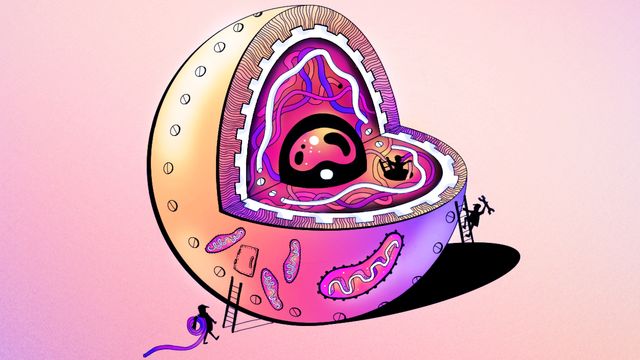Towards More Sustainable Labs
Infographic
Published: November 29, 2023
|
Mariana Gil, PhD


Mariana Gil holds a PhD in biological sciences from the Free University of Berlin, Germany. She moved into science communication in 2021 after almost two decades in academia.
Learn about our editorial policies
&
Kate Harrison, PhD


Kate Harrison is a senior science writer and is responsible for the creation of custom-written projects. She holds a PhD in virology from the University of Edinburgh. Before working at Technology Networks, she was involved in developing vaccines for neglected tropical diseases, and held a lectureship position teaching immunology.
Learn about our editorial policies

Credit: Technology Networks
Lab sustainability is of utmost importance in the modern scientific landscape. As research and development activities expand, so do their environmental impacts.
Sustainable laboratory practices help mitigate these effects by minimizing resource consumption, reducing waste generation and promoting responsible chemical management. In addition, these practices help to reduce costs and enhance lab efficiency.
Download this infographic to learn more about:
- The steps labs are taking to reduce their environmental footprint
- Critical success factors in achieving sustainability
- How instrument and service providers can help
Lab sustainability is of utmost importance in the modern
scientific landscape. As research and development activities
expand, so do their environmental impacts. Sustainable practices
in laboratories help mitigate these effects by minimizing resource
consumption, reducing waste generation, and promoting
responsible chemical management. In addition, these practices
help to reduce costs and enhance lab efficiency.
In a recent survey, 500 labs in different analytical industries shared how they are
striving to shrink their environmental impact:1
Labs'
environmental
footprint
but times are
changing...
Instrument and
service providers
can help
Who drives
sustainability
in the lab?
Communication
is the key
Benefits for
everyone
Labs consume several times
more electricity per square
foot than any other sector, due
to the use of energy-intensive
equipment and around-theclock operations.2
They consume
high amounts of water for
autoclaves, cooling systems and
the production of deionized water.
In addition, labs produce huge
amounts of chemical and plastic
waste, leaving a considerable
environmental footprint.3,4,5
There are ways to reduce this footprint without impacting on
the quality of research. The survey shows that labs are already
taking steps to become more sustainable.
The results of the survey also show that there is
an opportunity for vendors to support labs in their
sustainability goals. Data from all surveyed labs
shows that:
Therefore, there are several extra values vendors can bring to the lab:
Different industries consider different priorities when choosing an instrument vendor.
75-80% of labs in all industries reported that the
Lab Director or Head of Sustainability was responsible for the
lab’s environmental efforts. Therefore, the personal goals and
values of these stakeholders must align with the organizational
goals. In Life Science and Forensics labs, R&D departments
also play a large part in sustainability programs.
Laboratories value the information they receive from
vendors to help influence internal sustainability
programs and make product choices. Information is
received through a variety of channels, but face-toface makes the biggest impact across all industries.
The survey also reveals that labs are conscious of the benefits
of sustainability. Their top reasons for being positive about
sustainability are that it:
Instruments
and systems
supporting tracking
and monitoring
of sustainability
metrics
Consulting services
to assess/improve
lab efficiency
Compact
instruments that
use less bench
space
Recycling/
refurbishing
services
Leading critical success factor Industry
Internal organizational guidelines, protocols, campaigns
and initiatives
Educating staff via internal sustainability training programs
Routine evaluation and monitoring
Top priority Industry
Instruments with lower resource consumption
Cutting-edge tech to monitor resource consumption
65%
ensures safety from
a health, nature,
and environmental
perspective
67%
improves lab efficiency
51%
reduces carbon footprint
1. The lab sustainability survey was commissioned by Agilent and conducted by Frost & Sullivan. The survey included 500 online survey interviews conducted with managers in analytical
laboratories in China, Germany, United Kingdom and the United States.
2. Hafer M. Quantity and electricity consumption of plug load equipment on a university campus. Energy Efficiency. 2017;10:1013–1039. doi: 10.1007/s12053-016-9503-2.
3. Winter N, Marchand R, Lehmann C, et al. The paradox of the life sciences: How to address climate change in the lab: EMBO Rep. 2023;24(3):e56683. doi: 10.15252/embr.202256683.
4. Mariette J, Blanchard O, Berné O, et al. An open-source tool to assess the carbon footprint of research. Environ. Res.: Infrastruct. Sustain. 2022;2:035008. doi: 10.1088/2634-4505/
ac84a4
5. The carbon impact of biotech & biopharma. Report 2022. My Green Lab. https://www.mygreenlab.org/2022-carbon-impact-of-biotech--pharma-report.html. Published: November
2022. Accessed: October 2023
Meet the Authors

Custom Content Manager
Mariana Gil holds a PhD in biological sciences from the Free University of Berlin, Germany. She moved into science communication in 2021 after almost two decades in academia.

Senior Science Writer
Kate Harrison is a senior science writer and is responsible for the creation of custom-written projects. She holds a PhD in virology from the University of Edinburgh. Before working at Technology Networks, she was involved in developing vaccines for neglected tropical diseases, and held a lectureship position teaching immunology.
Related Topic Pages
Advertisement




